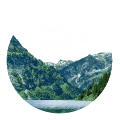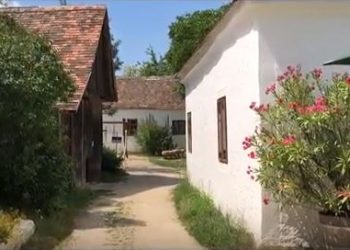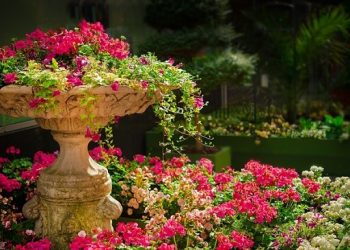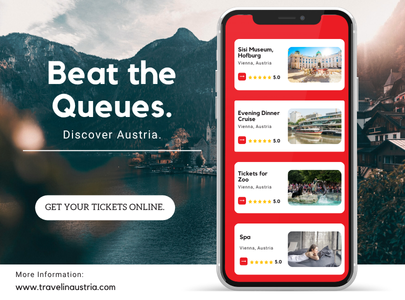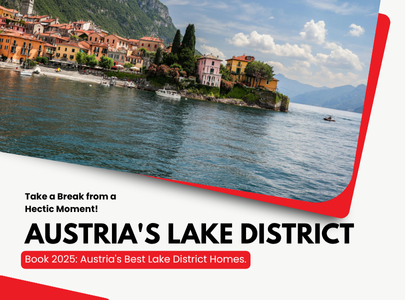Table of contents:
- The Most Recommended Palace – Prince Eugene of Savoy’s Hunting Lodge
- Niederweiden Palace – 5 minutes’ drive from the large hunting lodge
- How to get to the palaces by public transport from Vienna?
Read below for the most comprehensive and detailed information on the two beautiful palaces:
Schloss Hof – Prince Eugene of Savoy’s Hunting Lodge
Even if you are short on time on your way to Bratislava, it is recommended to stop at least at this palace, especially if you are traveling with children. The palace, its surrounding gardens, and the activities for children definitely make it a popular attraction outside of Vienna.
The Story of Schloss Hof
Where Prince Eugene’s hunting lodge stands today, there was once a small hunting manor established in 1620. The manor was built on the site of an older medieval fortress. The area was ideal for hunting due to the vast lands surrounding it. In 1725, the manor was purchased by Prince Eugene of Savoy, who transformed it into a large and magnificent hunting palace. At that time, new wings were added to the building, and extensive royal gardens were built.
The artists who designed and decorated the building were extremely talented, and some of them also took part in other important projects such as the design of the Belvedere Palace in Vienna. The palace rooms were beautifully decorated, and the investment in their design is certainly evident, as Prince Eugene himself lived in the palace for part of the time. After the prince’s death, since he had no children or other relatives, the palace was given to his niece.
Eventually, the palace was sold to Maria Theresa of the House of Habsburg, who began to make changes and improvements to the structure. To accommodate more guests, another floor was added to the palace, and at the same time, its overall design was changed according to the Neo-classical style. For several weeks each year, the Habsburgs spent time in the building, using it mainly for hunting and relaxation. After the death of Emperor Francis Stephen, Maria Theresa’s husband, this palace served as her temporary residence as a widow.
After Maria Theresa’s death in 1780, the hunting palace lost its importance, and her heirs did not visit it at all during the year. It was not until 1898 that Emperor Franz Joseph decided to hand over the complex to the army to turn it into a training facility. Even after the fall of the monarchy, the palace remained under army control. During World War II, the palace passed to the German Wehrmacht until it was taken by the Red Army. After the war ended, the palace returned to Austrian hands and underwent extensive renovations. Today, it serves as a museum and exhibition space for the life of the emperors of the Habsburg family.
This is what the palace looks like today
Parts of the Palace
- The Royal Apartment: The royal apartment is located in the north wing of the palace. These rooms were formerly used as Prince Eugene’s living quarters. Between 1773-1775, after the castle was purchased by Maria Theresa, the rooms were renovated and their function changed according to the empress’s needs. The rooms of the royal apartment are: a coffee room, a dining room, a games room (for card games or chess), a drawing-room, and the bedroom. The rooms are all beautifully decorated and display the original furniture.
- The Chapel: As is customary in royal palaces, this palace also has a chapel decorated with impressive wall and ceiling paintings depicting the story of Jesus, God, and the Holy Spirit. In this chapel, the marriage of Maria Christina, Maria Theresa’s beloved daughter, to her chosen one, Duke Albert (after whom the famous Albertina Museum is named), took place.
- The Ballroom: This spacious room was used for various events of the palace residents. In the past, there were game tables in it, but they are not there today. The room is illuminated by three large and impressive chandeliers. Today, the room is used for concerts. This room also underwent significant changes in Maria Theresa’s time, but you can still see some of the original design from Prince Eugene’s days. On the ceiling, for example, there is still a mural depicting the goddess Diana – the goddess of the hunt. This is a reminder of the building’s original function as a place of rest after a day of hunting in the nearby fields.
- Maria Theresa’s Apartment: After her husband’s death, Maria Theresa stayed in the palace for a period, and several rooms were converted to serve as her apartment. The apartment was in the southern part of the palace. The rooms of the apartment are: the antechamber, the audience room, the drawing-room, the servants’ room, and the bedroom. The rooms of Maria Theresa’s apartment are different from the rest of the palace and are slightly more refined, without ceiling paintings and bright colors.
- The Exhibition Rooms on Prince Eugene of Savoy: 4 rooms in the east wing of the palace are dedicated to the permanent exhibition on the life and work of the prince who lived there. The prince, who was a great military commander, became a legend in his own lifetime and a figure whom many admired. The prince was a great collector, mainly of books, art objects, and scientific instruments. Some of his collections are on display in the exhibition.
The Palace Gardens
The steep slopes around the palace allowed Prince Eugene to create a wonderful French-style garden. The gifted garden planner Anton Zinner succeeded within a few years in creating one of the most beautiful gardens in the entire region. The garden is divided into 7 spectacular terraces, each designed with incredible symmetry and precision. On the various terraces, there are impressive fountains such as the Neptune Fountain, the Sibyl Fountain, and the Octagonal Fountain, as well as colorful flowerbeds and various statues. As you climb the beautiful staircases between the different terraces, you can stop and look out over the open areas surrounding the palace. On clear days, you can see a magnificent view of the city of Bratislava and its surroundings.
The Orangery
To allow for the cultivation of Prince Eugene’s more delicate plants, two large orangeries were built on the castle grounds by the talented architect Johann Lucas von Hildebrandt. The orangeries were built in a modern style of glass and wood. In the early 19th century, the orangeries were converted into residential buildings for the palace workers, but in 2002 they were converted back to serve as orangeries as they were originally intended.
The Palace Farm – Fun Activities for Children
In the 18th century, the farm served as a source of food for the palace residents. Today, it serves as a wonderful attraction for the whole family.
Petting Zoo
At the farm, you can visit the petting zoo with 200 animals of the same types that were on the farm when it was an active residence in past centuries. The animals you can see in the petting zoo are rare white donkeys, Bactrian camels, Lipizzaner horses (like the horses at the Spanish Riding School in Vienna), Noriker horses, ponies, Hungarian sheep, four-horned goats, and white peacocks. Some of the animals roam freely throughout the complex. You can pet some of them and also ride the horses if you wish.
The Bakery
This room was used for baking pastries and bread for the palace residents. The original oven has been preserved and is used for a variety of workshops for children. One of the popular workshops is one where children can bake bread. In the bakery complex, there is also a children’s theater where they can dress up, play, and dance.
The Botanical Gardens
On the palace farm, there are 5 small gardens with a great variety of plants. Some of the plants are intended for food and seasoning, and some are intended to beautify the palace gardens. You can walk among the herb and vegetable gardens, enjoy the diverse scents, taste the ripe fruits, or marvel at the colorful rose garden.
Experiential Trails for Children
In the palace complex, there are two interactive trails for children that include games and tasks around themes related to life in the palace and the farm. Along the trail, children can step into the shoes of a stable boy or a maid in the palace and experience life in the palace from a different perspective. The various stations along the trails present the different crafts that were done in the palace – baking, hunting, gardening, etc. At each station, children can collect points and eventually win a small prize as a souvenir.
Guided Tours in English
You can join a guided tour of the palace and its exhibitions in English. The English tours take place on Sundays at 10:30 AM and cost €5 per participant (in addition to the entrance fee).
Additional Essential Information for Visiting Schloss Hof
Opening Hours:
- Winter (January 1 to March 14): Every day from 10:00 AM to 4:00 PM
- Summer (March 15 to November 18): Every day from 10:00 AM to 6:00 PM
Entrance Fees (Combined ticket for Schloss Hof and Niederweiden Palace):
- Adult – €24
- Child (6-18) – €13.50
- Child under 6 – Free
- Family ticket (2 adults and up to 3 children) – €61.50
- Guided tour in English – €5 (additional)
- Audio guide in English – Free
- Entrance to the Christmas market only – Adult – €8. Child (6-18) – €5
You can purchase tickets online.
Address: Schloss Hof, Schloßhof 1, 2294 Schloßhof
Map:
Niederweiden Palace – 5 minutes’ drive from the large hunting lodge
One of the ideal places to combine with a visit to the hunting lodge is the small Niederweiden Palace (Schloss Niederweiden). The palace also served as a small hunting lodge from the 17th century. It was built by the famous architect Johann Bernhard Fischer von Erlach (the architect who built Schönbrunn Palace, St. Charles Church, and the National Library in Vienna) for Count Ernst Rüdiger von Starhemberg.
In 1726, Prince Eugene of Savoy purchased the small hunting lodge and added it to the large hunting complex he had acquired a year earlier. The prince hardly changed the structure, only designing one apartment inside it that served as his private residence. A lavish garden was established around the palace with beds of plants in a different, less symmetrical style than the gardens of the large hunting lodge.
In 1755, both palaces were purchased by Maria Theresa, and she redesigned them. Maria Theresa enlisted the best architects and artists to change the appearance of the palace and turn it into a royal and spectacular place. In some of the renovations, magnificent ceiling paintings, special wallpapers, and impressive wall decorations were added to the palace. In 1770, Maria Theresa ordered the construction of a central path between the large palace and the small palace house.
After Maria Theresa’s death, the palace became part of the military camp that operated in the area, and during World War I, it even served as a horse stable. After the fall of the monarchy, the palace passed into state ownership. In the following years, the building continued to be neglected and abandoned, and it was only in 1986 that it was renovated and restored to its former glory. Today, the palace serves as a center for various exhibitions.
Additional Essential Information for Visiting Niederweiden Palace
Opening Hours:
From March 15 to November 18, from 10:00 AM to 6:00 PM
Entrance Fees (Combined ticket for both palaces):
- Adult – €24
- Child (6-18) – €13.50
- Child under 6 – Free
- Family ticket (2 adults and up to 3 children) – €61.50
Official Website (part of the Schloss Hof website)
Address: Niederweiden 1, 2292 Niederweiden
Map:
How to get to the palaces by public transport from Vienna?
There are two options to get to the palaces by public transport.
Train:
From Vienna, you can take a regional train from the main train station (Wien Hbf). You need to take the train that stops at the Marchegg station. The journey takes between 45 minutes and an hour. Plan your journey here.
From the Marchegg station, there is a free shuttle every day that will take you directly to both palaces.
The free line operates at the following times:
- Winter (mid-November to mid-March) – Saturdays, Sundays, and holidays: 10:10 AM from Marchegg station to the palaces. The return journey departs at 3:35 PM.
- Summer (mid-March to mid-November) –
- Monday to Friday: 10:00 AM from Marchegg station to the palaces. The return journey departs at 3:45 PM. During the day, there are also shuttles to Niederweiden Palace.
- Saturdays, Sundays, and holidays: 10:10, 11:10, 12:10, 1:10 PM from Marchegg station to the palaces.
- The return journey departs at: 12:45, 3:45, 4:45, 5:45 PM.
Bus (in the summer months only):
From mid-March to the end of October, there is a dedicated bus that travels from Vienna city center to the hunting lodge, Niederweiden Palace, and the ancient Roman city of Carnuntum. This is a tourist bus, so you can hop on and off at the various stops along the route.
For travel costs and more information.
Timetable:
If you are still not sure whether it is worth traveling to Bratislava at all, you can read about 9 reasons why you should combine a trip to Bratislava with a visit to Vienna.

